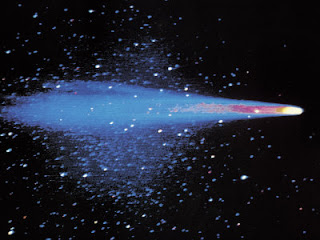
There’s a show happening later this week you won’t want to miss.
NASA recently reminded us that the Earth will pass through a stream of debris from Halley’s comet on May 6th. The result? A “mild but beautiful meteor shower” called the eta Aquarids.
If you want to witness the show, NASA’s advice is to be awake in the early morning hours this Friday. You’ll also want to get as far away from city lights as you can.
“Each eta Aquarid meteoroid is a piece of Halley’s Comet doing a kamikaze death dive into the atmosphere,” said NASA astronomer Bill Cooke. “Many people have never seen this famous comet, but on the morning of May 6th they can watch bits of it leave fiery trails across the sky.”
Halley’s Comet,which orbits the sun every 76 years, leaves behind a trail of vaporized debris when it swings by the sun. That means twice a year, the Earth gets a meteor shower. (In May, that’s the eta Aquarids. In October, it’s the Orionids.)
Read More
NASA recently reminded us that the Earth will pass through a stream of debris from Halley’s comet on May 6th. The result? A “mild but beautiful meteor shower” called the eta Aquarids.
If you want to witness the show, NASA’s advice is to be awake in the early morning hours this Friday. You’ll also want to get as far away from city lights as you can.
“Each eta Aquarid meteoroid is a piece of Halley’s Comet doing a kamikaze death dive into the atmosphere,” said NASA astronomer Bill Cooke. “Many people have never seen this famous comet, but on the morning of May 6th they can watch bits of it leave fiery trails across the sky.”
Halley’s Comet,which orbits the sun every 76 years, leaves behind a trail of vaporized debris when it swings by the sun. That means twice a year, the Earth gets a meteor shower. (In May, that’s the eta Aquarids. In October, it’s the Orionids.)
Read More